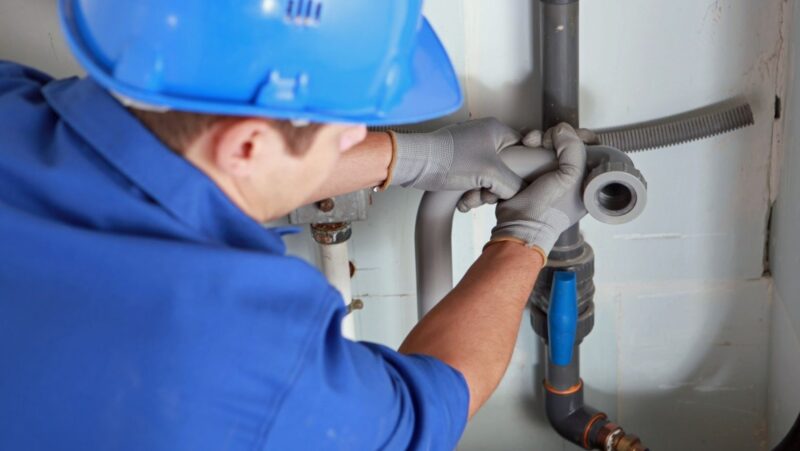
Roofing emergencies can strike at any time, often catching homeowners off guard and leaving them helpless. From sudden leaks during a torrential downpour to structural damage caused by fallen debris, these situations can be stressful and potentially dangerous if not handled promptly and effectively. Amidst the chaos and uncertainty of a roofing emergency, it’s essential to maintain a level head and approach the situation with confidence. With the right knowledge, preparation, and a clear plan of action, you can navigate these challenges with poise, minimizing damage to your home and ensuring your family’s safety. This comprehensive guide’ll delve into the various types of roofing emergencies, explore proactive measures to prepare for such events, and provide practical steps to respond swiftly and decisively. By empowering yourself with the necessary tools and strategies, you can face roofing emergencies head-on, knowing you are equipped to handle any challenges.
Understanding Common Roofing Emergencies
Roofing emergencies can manifest in various forms, each presenting its challenges. One common emergency is a leaky roof, often caused by damaged shingles, flashing, or underlying structural issues. Another prevalent issue is storm damage, ranging from minor shingle displacement to severe structural compromise. Additionally, fallen debris, such as tree branches or hail, can puncture the roof’s surface, leading to leaks and further damage if left unattended. Understanding the nature of these emergencies is crucial in developing a proactive approach to handling them effectively.
Preparing for Roofing Emergencies
Preparation is key to confidently managing roofing emergencies. Start by conducting regular roof inspections to identify potential weak spots or damage before they escalate into emergencies.
Keep your gutters clean and free of debris to prevent water buildup and potential leaks. It’s also wise to familiarize yourself with your homeowner’s insurance policy, understand what is covered in the event of a roofing emergency, and ensure your policy is up-to-date. Additionally, establish a relationship with a reputable roofing contractor beforehand so you have a trusted professional to call upon in times of need.
Responding to Immediate Threats
In the event of a roofing emergency, it’s essential to respond promptly to mitigate further damage. If you notice a leak, place buckets or tarps to collect dripping water and prevent it from spreading to other areas of your home. In cases of severe storm damage, prioritize safety by evacuating your home if necessary and avoiding areas with visible structural compromise. Contact emergency services if there is a risk of injury or if your home is no longer safe to inhabit. Once immediate threats are addressed, document the damage with photographs for insurance purposes and contact your roofing contractor for a professional assessment. A qualified contractor will thoroughly inspect your roof, identify the extent of the damage, and recommend appropriate solutions to address the issues effectively.
Temporary Repairs and Damage Control
While awaiting professional assistance, you can undertake temporary repairs to minimize damage and ensure the safety of your home. Use roofing cement or sealant to patch small leaks temporarily, and cover damaged areas with tarps to prevent water intrusion. Exercise caution when performing temporary repairs, especially on steep or unstable roofs, and always prioritize personal safety. Keep in mind that these measures are only temporary solutions, and professional repairs or replacement may be necessary to address the issue fully.
Working with Professionals
Once the immediate danger has passed, enlist the help of qualified roofing professionals to assess and repair the damage. Choose a reputable contractor with experience in handling roofing emergencies and ensure they are licensed and insured. Request a detailed estimate outlining the scope of work and associated costs before proceeding with repairs. Be wary of contractors offering unsolicited services or pressuring you into signing contracts on the spot. Take the time to research and compare multiple quotes to ensure you’re getting the best value for your investment.
Preventative Maintenance and Long-Term Solutions
After addressing the immediate crisis:
- Focus on preventative maintenance to safeguard your roof against future emergencies.
- Schedule regular inspections and maintenance checks to identify and address potential issues before they escalate.
- Replace damaged or worn-out shingles promptly and reinforce vulnerable areas such as flashing and sealant to prevent leaks.
- Consider investing in durable roofing materials and reinforcements, especially if you live in an area prone to extreme weather conditions.
By prioritizing preventative maintenance, you can minimize the risk of future emergencies and prolong the lifespan of your roof.
Handling roofing emergencies with confidence requires a combination of preparation, quick thinking, and decisive action. By understanding common emergencies, preparing proactively, and responding effectively, you can mitigate damage and ensure the safety of your home and loved ones. Remember to prioritize personal safety at all times and enlist the help of qualified professionals when necessary. With the right approach, you can navigate roofing emergencies with poise and assurance, safeguarding your home for years to come.














